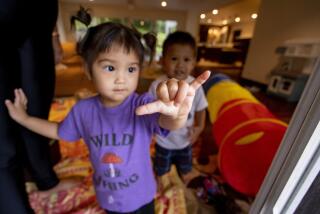A slow — yet energizing — boat to Hawaii
LAHAINA, Hawaii — “Here, take this one,” Elisa said, lifting an orchid lei from her shoulders and draping it on Laurel’s. “Aloha.”
My wife, Laurel, and I were in the tender queue with Elisa, our “port shopping specialist,” at Lahaina on Maui, waiting to be shuttled to Cunard Line’s Queen Victoria for the final six nights of our 14-night round trip from Los Angeles to the Hawaiian Islands. Laurel had put off buying a lei and the vendors were sold out, so Elisa had generously given hers — a typically Hawaiian act of sharing.
The Victoria is a world traveler and won’t return to Hawaii soon. But Celebrity, Holland America, Princess and Carnival regularly offer round trips similar to ours, fall through spring. Whichever ship you choose, you’ll be sailing in the metaphorical wake of the Matson and American President lines, great West Coast steamship companies that served Hawaii and the Far East in the heyday of passenger shipping.
A dozen years ago, Laurel and I had made a weeklong circuit of the Hawaiian Islands on another classic ship, the Independence, a voyage now offered by Norwegian Cruise Line, but that only scratched, not stopped, the itch to reach Hawaii by sea.
Finally, in February 2012, we sailed west from Los Angeles, Hawaii-bound. We would get there the slow-paced, traditional way: walking the deck, reading, staring at the sea, dining well, sipping martinis to the soothing sounds of cocktail piano. The sea air both relaxed and energized us. When we arrived, we were ready for the ports.
Our first was Hilo, on the Big Island of Hawaii, but the traditional landfall I’d long anticipated came next: Honolulu, on Oahu. We arrived in the freshness of early morning, with blankets of gray clouds a good background for the city skyline, bathed in low sunlight and punctuated by the 1926 Aloha Tower.
This aptly named 10-story-tall lighthouse and clock tower, built in a style known as Hawaiian Gothic, is Honolulu’s version of New York City’s Statue of Liberty, welcoming immigrants and tourists alike.
We prefer to strike out on our own rather than take ship-sponsored tours, so we chose the hop-on, hop-off Waikiki Trolley (an open-air bus gussied up to look like a streetcar, and not inexpensive at $32 online for a day pass). On a cruise, every day is a holiday, so we had overlooked the fact that we’d be touring on Presidents Day — and that the trolley would be packed with locals, meaning long boarding lines.
We did get to see much of the island this way, passing through Waikiki, nearly as much a high-rise city as downtown Honolulu, on the way to Diamond Head, Oahu’s iconic promontory.
By the time we returned to downtown, we had concocted a plan to rent a car the next day on Kauai. At Nawiliwili, our port for that green, volcanic island, the dock is a short walk from the airport, where our car cost about $200 for the day. It was significantly more than if we had booked in advance, but still a bargain when split with a couple from Munich, Germany, we had met on the ersatz trolley, and we were free to set our own itinerary.
We drove along sparkling beaches to Hanalei Bay on the north shore, and through a lush valley ringed with jagged mountains and floored with taro ponds. This was the Hanalei National Wildlife Refuge, where the ponds are managed as waterfowl habitat, a necessity since the demand for poi, made from taro roots and once a Hawaiian staple, has plummeted.
We ended our day at Waimea Canyon, where we walked among the clucking feral chickens abundant on Kauai to the lookout. Waimea means “reddish water,” and in coloration the canyon is reminiscent of the Grand Canyon, only smaller.
As a habitual collector and “completist,” I had a mission on Maui. I’d ridden trains in 48 states, and this cruise gave me a chance to nail down No. 49 (leaving only Oklahoma). Hawaii never was much of a railroad state, except for its substantial collection of plantation railroads, none still serving that original purpose.
But the narrow-gauge Lahaina, Kaanapali & Pacific Railroad, which markets itself as the Sugar Cane Train, for the last 30 years has hauled tourists six miles from Lahaina (once the site of the Pioneer Mill, which processed the cane) to resorts in Kaanapali, with beaches for swimming and sunning.
“It’s just a slow, boring ride,” said the taxi driver, who rushed us to the train station. The haste was needed because our tender had died halfway to the pier in Lahaina, so we’d bobbed around in that oven-like cocoon for an hour before another tender rescued us. But the open-air cars of the Sugar Cane Train were breezily cool, and the ride behind the chugging and whistling Myrtle, a diminutive industrial steam locomotive built in 1943, was pleasant — especially for a train buff like me.
Then came more relaxed, contemplative deck-chair days as we headed back to Los Angeles. Though we hope to visit Hawaii again, we had skipped a ritual dating to Matson Line days: tossing leis overboard to guarantee your return.
We’d done that from the Independence, when leis were all natural, and it had worked. Laurel’s orchid blossoms were strung on plastic, typical today, I suppose, so another tradition passes.
Happily, though, the tradition of sailing to Hawaii is alive and well.
More to Read
Sign up for The Wild
We’ll help you find the best places to hike, bike and run, as well as the perfect silent spots for meditation and yoga.
You may occasionally receive promotional content from the Los Angeles Times.






